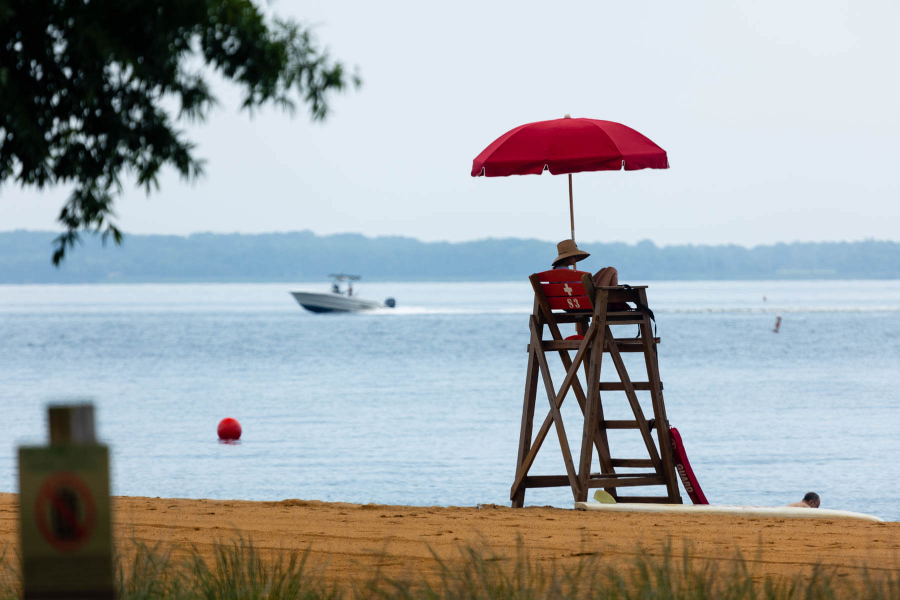EPA sets expectations for states, D.C. in third phase of Bay pollution diet
The Environmental Protection Agency provides its expectations for jurisdictions to reduce pollutants to the Bay and its streams

The U.S. Environmental Protection Agency (EPA) has given the jurisdictions in the Chesapeake Bay watershed—Delaware, the District of Columbia, Maryland, New York, Pennsylvania, Virginia and West Virginia—its expectations for the third phase of the Bay’s pollution diet.
The pollution diet, also known as the Chesapeake Bay Total Maximum Daily Load (Bay TMDL), establishes pollutant limits that are designed to reduce the amount of nitrogen, phosphorus and sediment that flow to the Bay and its tidal tributaries.
Since 2010, the six watershed states and the District of Columbia have shown how they would reduce pollutant loads to meet those limits through watershed implementation plans (WIPs). WIPs are detailed plans, developed by the jurisdictions in conjunction with local and federal partners, with specific timelines for implementing and achieving pollutant load reductions. These will be the third WIPs since the Bay TMDL was set, and will carry the jurisdictions through 2025 to meet their water quality goals.
The expectations are built upon decisions made by the Chesapeake Bay Program partnership, which includes the EPA as well as the seven Bay jurisdictions, and addresses how to account for changing conditions due to the Conowingo Dam, climate, and growth.
Despite some jurisdictions having to do more in order to achieve their nutrient and sediment targets, each of the seven watershed jurisdictions reaffirmed their commitment to having all the practices and controls in place by 2025 to meet applicable water quality standards in the Chesapeake Bay.
The expectations guide the jurisdictions in building on their two earlier WIPs to:
- Further optimize their choices of pollutant reduction practices.
- Incorporate lessons learned and new science and information from the midpoint assessment.
- Develop comprehensive local and federal engagement strategies so their contributions are clearly articulated.
- Ensure new and increased pollutant loads are offset.
- Build and sustain the necessary capacity needed to achieve their Phase III WIP commitments by 2025.
In their Phase III WIPs, the jurisdictions are expected to:
- Specify the programmatic and numeric commitments needed to achieve the Phase III WIP planning targets by 2025.
- Develop comprehensive local, regional and federal engagement strategies and commitments.
- Engage local partners in local planning goal development and implementation.
- Consider adjustments of state-basin targets and Phase II WIP source sector goals.
- Account for changes due to climate change and growth.
- Target implementation at the Bay segment-shed scale (Delaware, District of Columbia, Maryland and Virginia only).
The Chesapeake Bay Program partnership agreed to a separate Conowingo planning target which all jurisdictions would work collaboratively to achieve. They also agreed to develop a separate Conowingo WIP that will provide details on how to reduce adverse water quality impacts resulting from Conowingo Dam infill, as well as a timeline for accomplishing it.
EPA also has developed specific Phase III WIP expectations for the Commonwealth of Pennsylvania to help ensure Pennsylvania is on track for meeting their water quality goals under the Bay TMDL by 2025.
EPA will be issuing federal agency expectations for the development of federal water quality milestones and the role federal agencies can play in the development and implementation of the jurisdictions’ Phase III WIPs.
The EPA will measure the jurisdictions’ progress through two-year water quality milestones that lead up to 2025, when all measures needed for a restored Bay must be put into place. Should the jurisdictions need to modify their commitments between when they finalize their WIPs and 2025, they can do so through their two-year milestones.
Learn more about the expectations for the seven Bay jurisdictions.

Comments
There are no comments.
Thank you!
Your comment has been received. Before it can be published, the comment will be reviewed by our team to ensure it adheres with our rules of engagement.
Back to recent stories